By Dan Weisz
This activity is also going on in the Foothills. Whether you know of neighborhood nests or not, we have Great Horned Owls throughout the Foothills. Imagine this in your own backyards:
A report from another morning at the mid-Tucson Great Horned Owl nest: The young continue to grow up. Mom is out of the nest as it has become much too crowded with three active youngsters inside. She remains close by and either snoozes or appears alert, catnapping all day long.
Here, you can see a little part in the feathers on her breast. That comes from her “brood patch”. One of the functions of feathers is to keep a bird warm and feathers are good at preventing heat loss. This would become a problem during incubation as the bird’s eggs need to be kept sufficiently warm and feathers act as a barrier to heat transfer from parent to egg. Most bird species have evolved to develop a brood patch- an area of belly skin that loses its feathers near the end of the egg-laying period. With the feathers lost, the parent can gently settle onto the eggs and deliver good body heat to her eggs without interference throughout their incubation period.
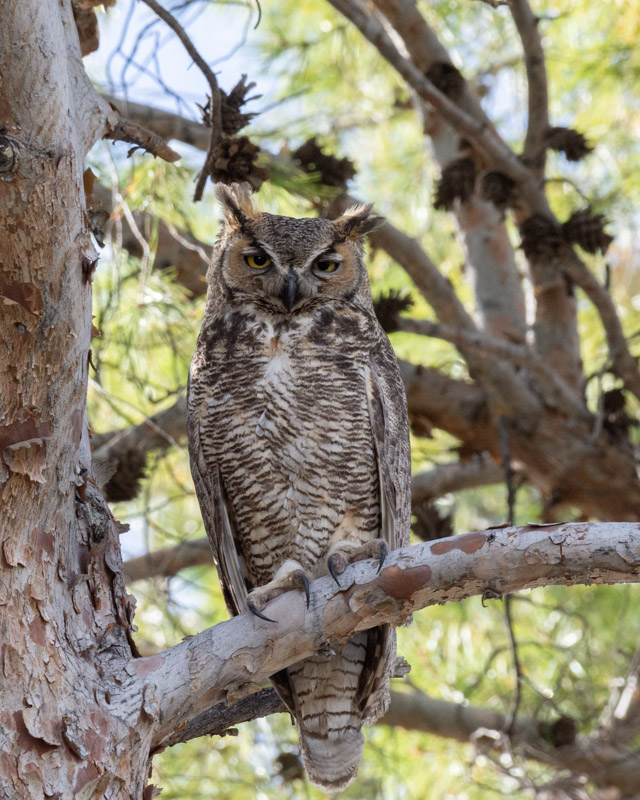
I like how the sun comes through her feather tufts. Those features give this species their name: “Great Horned”. They aren’t horns; they have nothing to do with her ears or hearing; they may be decorative or help to break up the bird’s silhouette while she is perched out in the open during daylight. The feathers’ actual name is a “plumicorn”
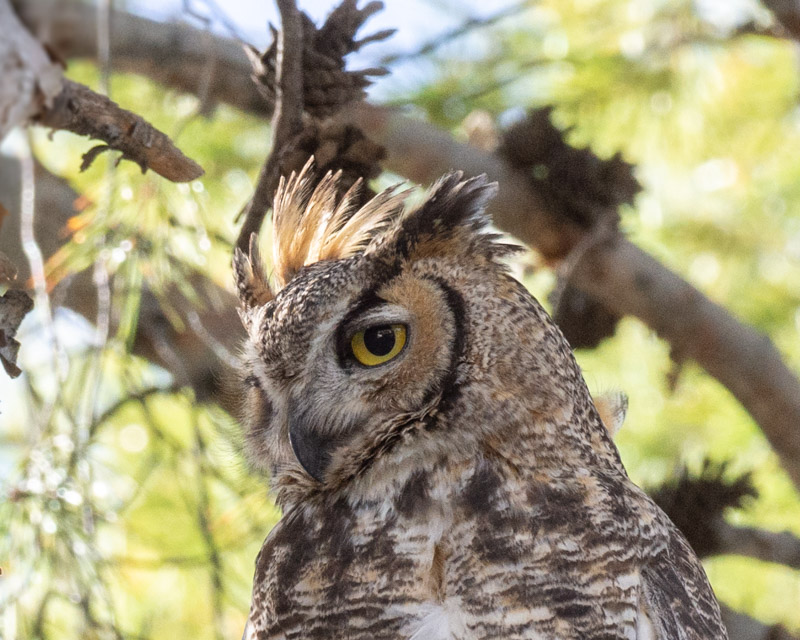
Stretching is good. Her brood patch is very apparent in this position. Check out her leg stretch and the look of those powerful talons.
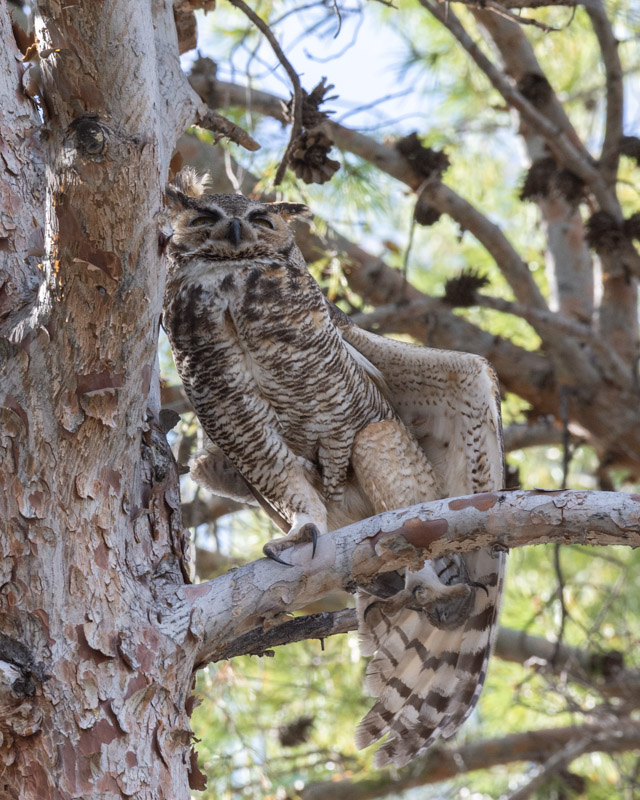
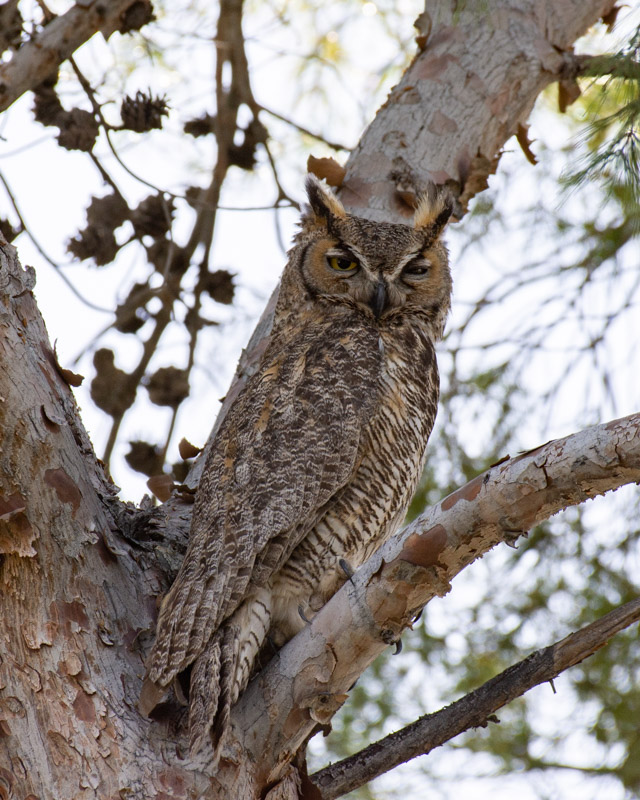
As young as the owlets are, and they leave the nest at around 5-7 weeks old, they are already well versed in bird behavior. Here is this little one stretching just like Mom. Even if the birds cannot fly yet, they are practicing and performing the skills they will use daily as adults. Here it is beginning a stretch of its left wing.
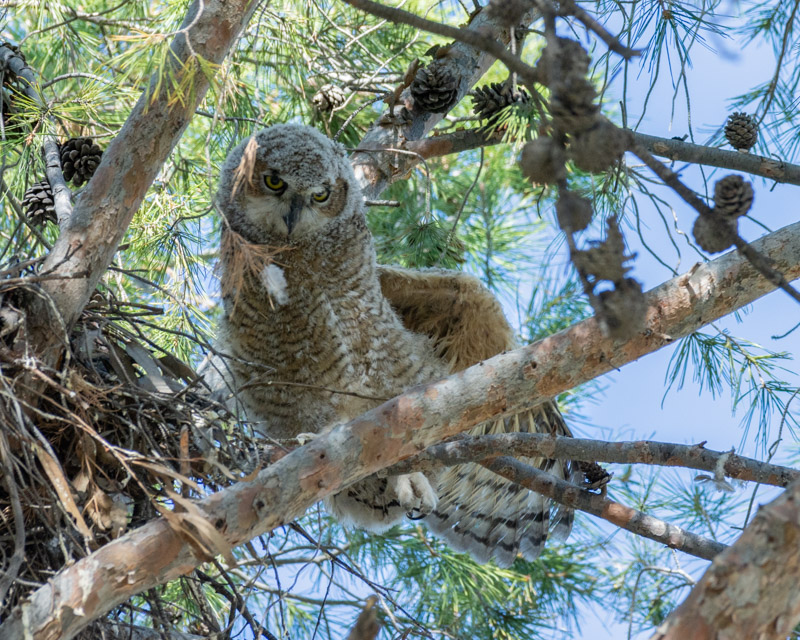
And here is the full stretch. Notice how its wing feathers are not fully developed. It appears that there are many feather shafts under its wing. I am still trying to figure out exactly what this stage of feather development is called. The owlet’s foot looks just like the adult’s did mid-stretch.
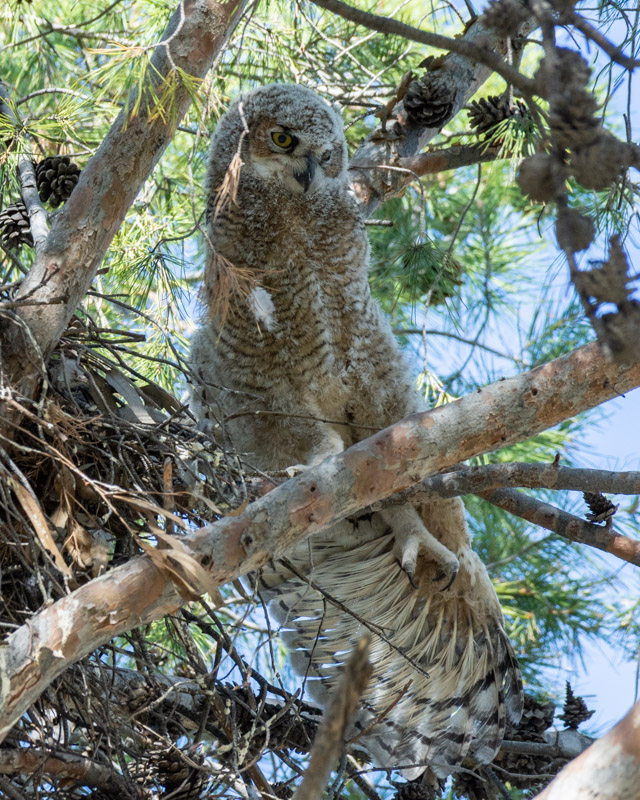
And a close-up of the foot and feathers.
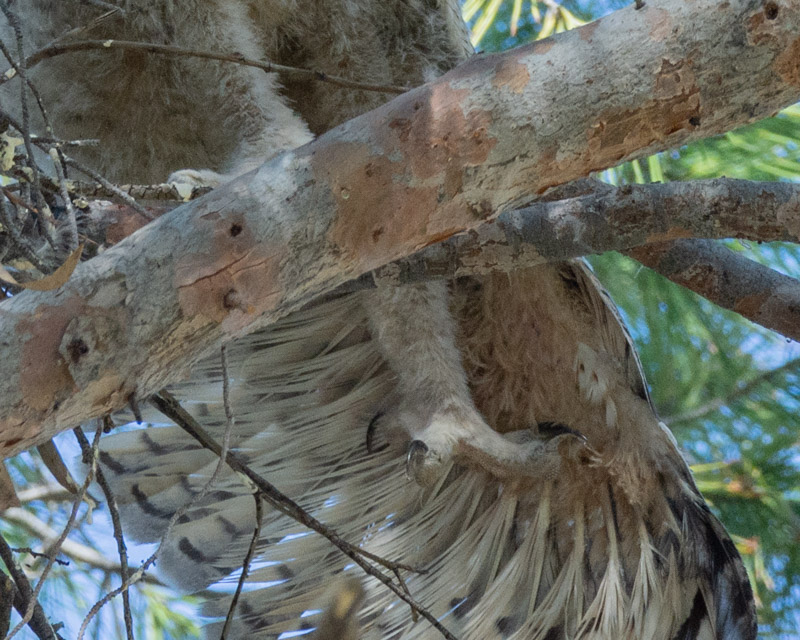
And then mantling to relax and put all of its feathers into place.
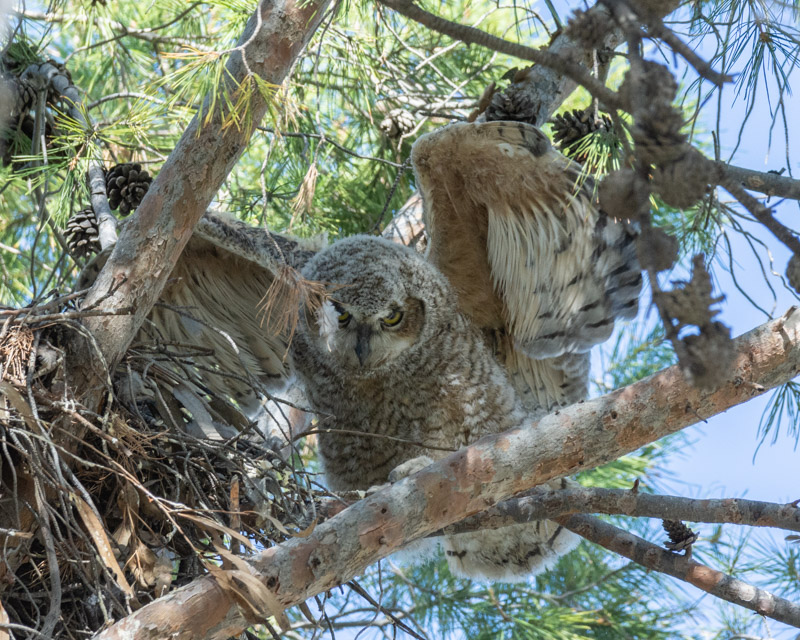
Portrait of a Great Horned Owlet
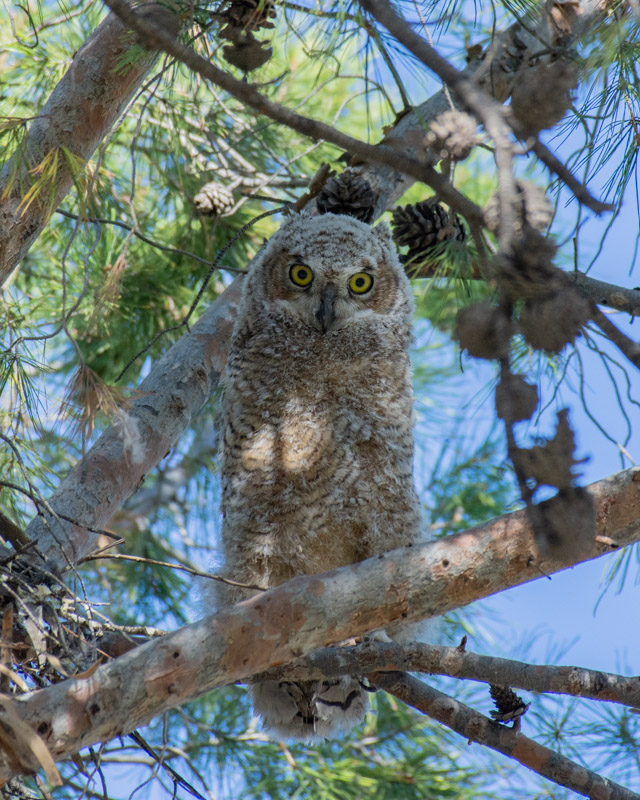
And then a stretch of the other side, her right wing.
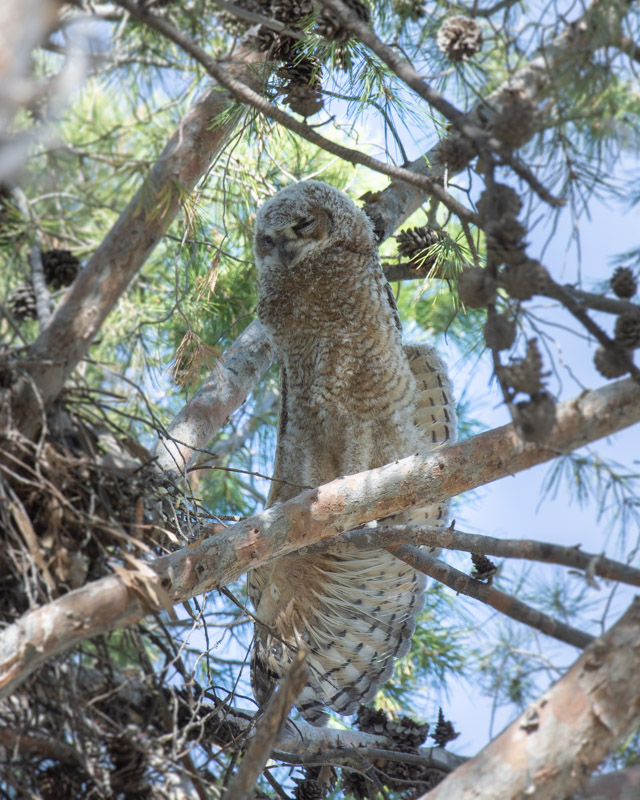
The story continues!
